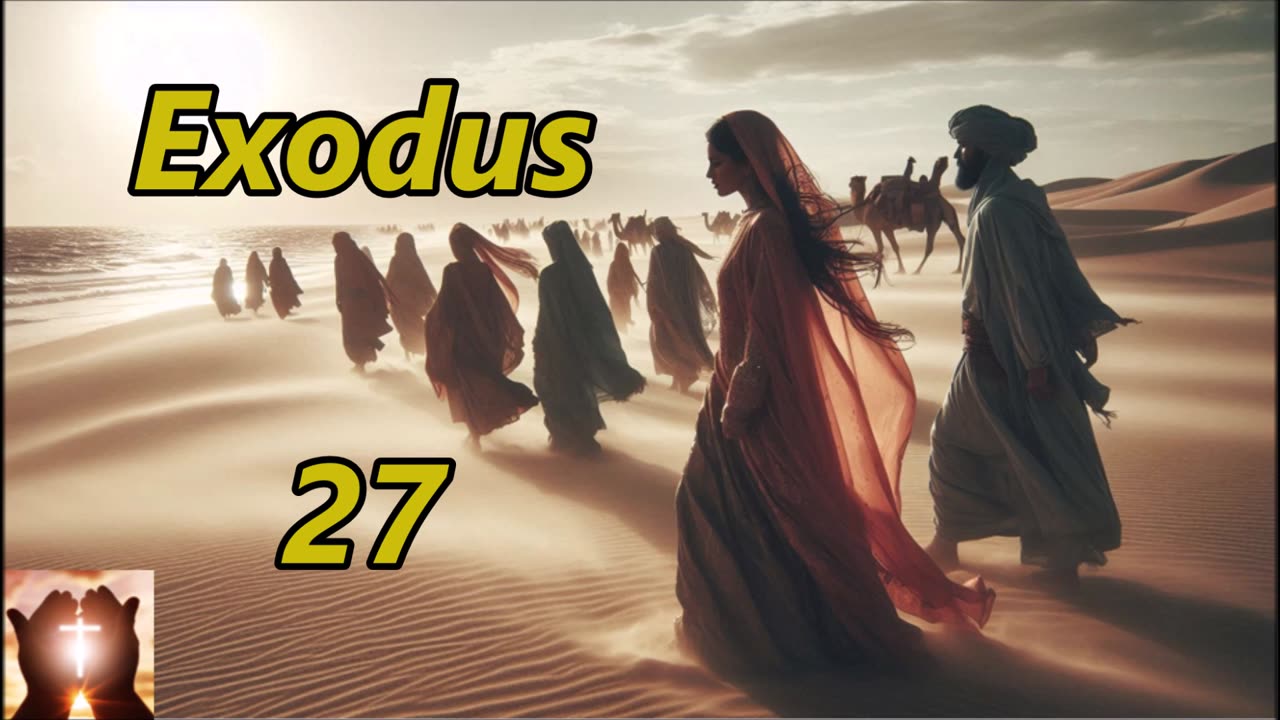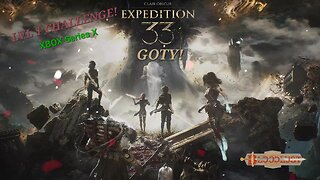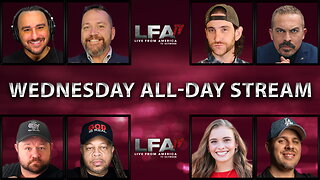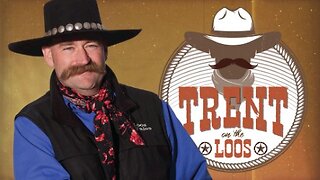Premium Only Content

Exodus 27
1. The Altar of Burnt Offering (Exodus 27:1–8)
Structure: A square altar made of acacia wood, overlaid with bronze. It measured 5 cubits (about 7.5 feet) long and wide, and 3 cubits (about 4.5 feet) high.
Design: Horns at each corner (symbolizing strength and mercy), and all utensils (pans, shovels, basins, forks, firepans) made of bronze.
Purpose: This altar was placed in the courtyard and used for animal sacrifices, essential to the Israelites’ atonement and worship practices.
2. The Courtyard of the Tabernacle (Exodus 27:9–19)
Layout: A rectangular courtyard surrounding the tabernacle proper.
100 cubits long (approx. 150 ft) on the north and south.
50 cubits wide (approx. 75 ft) on the east and west.
Materials: Linen hangings supported by bronze pillars and silver hooks.
Gate: Located on the east side, 20 cubits wide, made of blue, purple, and scarlet yarn—symbolizing access to God’s presence through order and holiness.
3. Oil for the Lampstand (Exodus 27:20–21)
Command: The Israelites were to bring clear (pure) olive oil to keep the lampstand in the tabernacle burning continually.
Responsibility: Aaron and his sons (the priests) were to maintain it from evening to morning before the Lord, as a perpetual statute.
Key Takeaways:
Worship Requires Preparation: God gives specific instructions, emphasizing that worship is sacred and orderly.
Symbolism of Light: The ever-burning lamp represents God’s eternal presence and guidance.
Accessibility: The courtyard made a way for the people to approach God, but only through sacrifice and priestly mediation.
-
 1:19:00
1:19:00
VapinGamers
1 hour agoJump Space - We All Scream in Space - Early Access - !rumbot !music
63 -
 LIVE
LIVE
Joker Effect
1 hour ago(Kick) Streamers Have Ruined The Streaming Landscape and Here is How! Reviewing Phase Partners...
500 watching -
 3:46:40
3:46:40
The Blood Lust Gaming
3 hours agoClair Obscur: Expedition 33 - LVL 1 challenge run pt.3
37 -
 2:11:38
2:11:38
Nikko Ortiz
3 hours agoPTSD Is Fun Sometimes | Rumble LIVE
9.35K1 -
 1:02:40
1:02:40
BonginoReport
4 hours agoA Florida Man Attempts a Jussie Smollett Hoax - Nightly Scroll with Hayley (Ep. 146)
118K58 -
 LIVE
LIVE
XxXAztecwarrior
2 hours agoNew Season/ New missions/Delta Force
42 watching -
 1:17:15
1:17:15
Playback Request Live
2 hours agoPRL EP 14 - EMO NIGHT 🖤
7.54K2 -
 2:39:43
2:39:43
Blabs Games
5 hours agoWill We Find A Server? Star Wars Battlefront II | Noob Plays
10.6K1 -
 LIVE
LIVE
LFA TV
23 hours agoLIVE & BREAKING NEWS! | WEDNESDAY 10/1/25
536 watching -
 30:00
30:00
BEK TV
10 hours agoGUT HEALTH AND THE POWER OF KIMCHI WITH KIM BRIGHT ON TRENT ON THE LOOS
9.51K